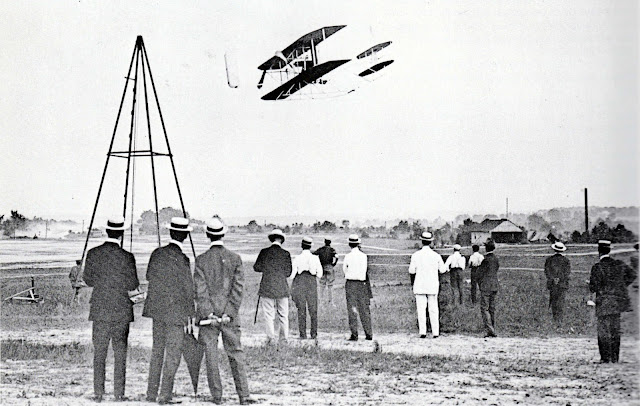Signal Corps Specification Number 486 was issued December 23 1907 to provide the US Army with its first heavier-than-air aircraft. Requirements were as follows:
It must be easily assembled and disassembled so that an army wagon could transport it. that it be able to carry two people with a combined weight of 350 lbs, and must carry sufficient fuel for 125 miles, it be able to reach a speed of at least 40 mph which would be calculated during a two lap test flight over a 5 mile course, that it would be able to demonstrate that it could remain in the air for at least 1 hour.
The Wright brothers provided a wooden framed aircraft with a 25 hp engine driving two propellers, landing gear was two skids. it actually doesn't appear much different than the original 1903 model.
The aircraft was demonstrated in September 1908. On one flight a propeller split, the airplane glided down to a height of 75 feet and then crashed to the ground, killing passenger Thomas Selfridge.
The Wrights returned with a new plane in June 1909 and over the next two months it was demonstrated adequately and accepted. New army pilots were trained during the course of the next few months.


3 comments:
If you haven't yet, treat yourself to McCullough's book on the Wright Brothers. You'll be glad you did...
Approaches...? Hmmm. Looks to me like it has already passed the pylon, given that the design places the horizontal stabilizers out in front, with vertical rudders behind.
And the props were pushers.
I would say you are correct, it does not appear to be banking. Maybe I should have said passes:-)
Post a Comment